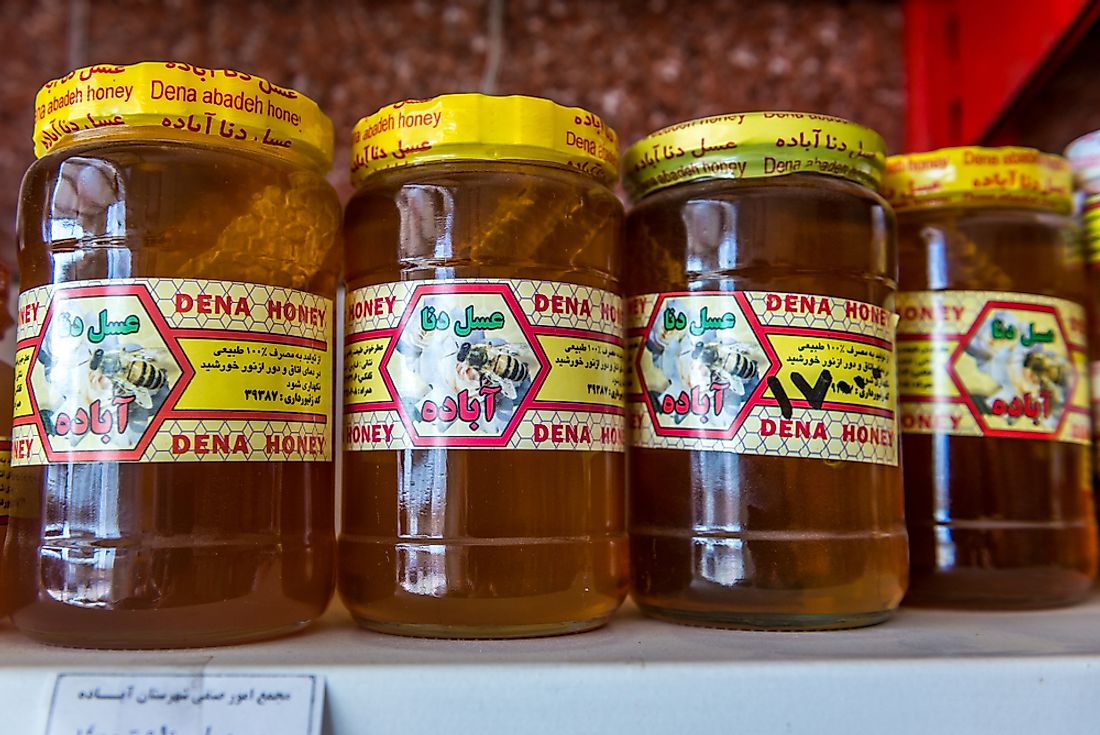Countries That Consume the Most Honey

Honey, alongside beeswax and royal jelly, is one of the main items produced by bees. Honey is popular throughout the world due to its sweet taste, and is included in many recipes to add flavor. Scientists believe that bees have been making honey for close to 40 million years. The earliest record of human consumption of honey dates back to a cave painting in Valencia, Spain, that was painted more than 60,000 years ago. Ancient civilizations valued honey chiefly for its sweet taste, and it was widely used as a trading commodity. Approximately 1.8 million tons of honey were produced in 2016, and more than 25% of this global total was produced by China.
Countries That Consume the Most Honey
The Central African Republic
In 2016, ApiTrade Africa, a nonprofit organization, estimated that the Central African Republic produced 16,200 tons of honey, which ranks fourth in Africa. However, the country has a higher daily per capita consumption of honey than any other country in the world. Honey is extremely well liked by the nation's citizens, especially as a natural sweetener to their meals. The Bayaka people, a pygmy community within the country, are well-versed in gathering honey.
New Zealand
New Zealand ranks tenth globally in terms of the production of honey, and second in the daily per capita consumption of honey. New Zealand is the world's chief producer of Manuka honey, which is one of the most expensive types of honey in the world. Hives that produce Manuka honey are usually in the vicinity of flowering Manuka trees. Manuka honey is unique given the large number of health benefits it has, such as aiding in the treatment of acne. Research is being conducted into various components of Manuka honey in order to better understand its medicinal properties. The number of beehives in New Zealand has increased continuously from 2006 to 2016, indicating an increase in the demand for honey both locally and internationally.
Slovenia
Slovenia ranks third in the world in daily per capita consumption of honey, with an average of 4.4 grams. Slovenia boasts of more than 10,000 beekeepers who produce more than half of the honey consumed in the country. Slovenian honey is revered for its unique taste and quality. Honey is an essential part of the traditional Slovenian breakfast, which contributes significantly to the amount of honey consumed in the country.
Challenges Facing the Beekeeping Industry
The beekeeping industry faces a myriad of problems that affect the quality and quantity of honey produced. In developing nations, one of the most significant challenges is the lack of skilled beekeepers. The farmers lack sufficient training in modern beekeeping practices and are generally left to rely on traditional methods. Access to proper equipment has also proven to be a challenge for the farmers since it is usually too expensive. Colony collapse disorder affects large number of hives in developed countries, leading to a reduction in the number of bees available to produce honey. The exact causes of the disorder are unknown, although scientists are studying some factors to determine the precise cause. Overuse of pesticides has been cited as one of the possible causes of the disorder.
Countries That Consume the Most Honey
| Rank | Country | Daily Grams of Honey Consumed Per Capita |
|---|---|---|
| 1 | Central African Republic | 9.62 |
| 2 | New Zealand | 5.55 |
| 3 | Slovenia | 4.4 |
| 4 | Greece | 4.24 |
| 5 | Switzerland | 3.87 |
| 6 | Austria | 3.62 |
| 7 | Turkey | 3.33 |
| 8 | Ukraine | 3.15 |
| 9 | Slovakia | 3.02 |
| 10 | Montenegro | 3.01 |











